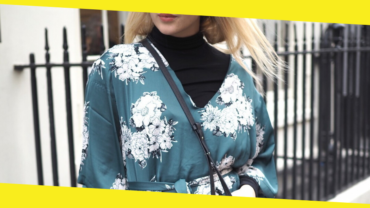The History of Wholesale Sterling Silver Bangle Bracelets

Did you ever wonder where the ubiquitous bangle comes from? This popular form of jewellery has a long and illustrious history. Originating from India, these rigid bracelets are commonly made of metal, wood, glass, ivory, silver, gold, iron and plastic. The bangle is a traditional ornament worn by women in the subcontinent. It’s common to see a new bride wearing glass bangles at her wedding, to symbolise the sanctity of marriage. In general, it is also considered inauspicious for a married woman to bare her arms, and that is why the bangle is worn so frequently.
Whether it’s part of your traditional dress or funky modern ensemble, there is a good reason that the bangle has stood the test of time. In fact, no matter the occasion, a bangle can easily compliment any outfit. Whether you prefer a single jade bangle or set of wholesale sterling silver bangle bracelets, either way, they will add a level of sophistication and attractiveness to your outfit. In this brief article, we are going to delve into the fascinating history of the bangle. So, without further ado, let’s jump on in!
Contents
ToggleBack to the Beginning
As a piece of jewellery, the bangle is characterised as a rigid and circular bracelet. Dating as far back as 2600 BC (the height of the Indus Valley Civilisation, in what is modern-day Pakistan). At this time, the Mohenjo-Daro settlements on the banks of the Indus River gave the bangle immense cultural significance.
For example, in 1973 archaeologist working at an Indus Valley site unearthed a 4,500-year-old statue, dubbed the “Dancing Girl”, which depicts a teenage girl of the Mohenjo-Daro tribe who is completely nude except for her arms, which are entirely covered in bangles. This is the first known evidence of an early civilisation ascribing cultural significance to an item of jewellery.
Although what we think of as the modern bangle originated in the Indus region, there is also evidence that the Denisovan species of human, residing in Siberia (Russia), wore a bangle-like accessory made of stone even further back in time, at a staggering 40,000 year ago!
Ancient Mayan, Mauryan, Roman and Indian ruins have all had bangle-like artefacts unearthed too, made of terracotta, stone, copper, glass, shells and so forth. Unquestionably, we can say that this ancient form of jewellery has held cultural significance for many people for many years.
Modern Significance
As mentioned in the introduction, the bangle is an essential item of wedding jewellery for many subcontinent brides, though its meaning and significance vary significantly from region to region. For many young women, the bangle is worn on their wedding day, and most days after that, as a symbol of luck in marriage.
In the modern jewellery world, the term “bangle” refers to a broad range of bracelets that are circular and either wholly closed or with a hinge. The name is loosely applied to many different styles, not just the thin and rigid Indian style that is predominant.
Nowadays, the bangle-style bracelet is a staple of the catwalk. The stacking look has become one of the most popular trends within the last few years. Both traditionalists and jewellery lovers alike adore wholesale sterling silver bangle bracelets.
Recommended For You
Four Ways to Wear a Jumpsuit this Winter
Most Inside
Most Inside offers high-quality recommendations and valuable updates to enhance all aspects of your life, providing premium guidance and enriching experiences.




